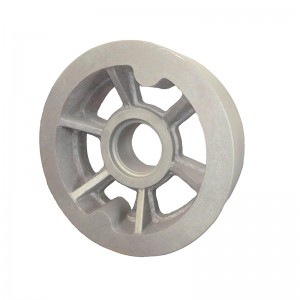- Afrikaans
- Albanian
- Amharic
- Arabic
- Armenian
- Azerbaijani
- Basque
- Belarusian
- Bengali
- Bosnian
- Bulgarian
- Catalan
- Cebuano
- China
- China (Taiwan)
- Corsican
- Croatian
- Czech
- Danish
- Dutch
- English
- Esperanto
- Estonian
- Finnish
- French
- Frisian
- Galician
- Georgian
- German
- Greek
- Gujarati
- Haitian Creole
- hausa
- hawaiian
- Hebrew
- Hindi
- Miao
- Hungarian
- Icelandic
- igbo
- Indonesian
- irish
- Italian
- Japanese
- Javanese
- Kannada
- kazakh
- Khmer
- Rwandese
- Korean
- Kurdish
- Kyrgyz
- Lao
- Latin
- Latvian
- Lithuanian
- Luxembourgish
- Macedonian
- Malgashi
- Malay
- Malayalam
- Maltese
- Maori
- Marathi
- Mongolian
- Myanmar
- Nepali
- Norwegian
- Norwegian
- Occitan
- Pashto
- Persian
- Polish
- Portuguese
- Punjabi
- Romanian
- Russian
- Samoan
- Scottish Gaelic
- Serbian
- Sesotho
- Shona
- Sindhi
- Sinhala
- Slovak
- Slovenian
- Somali
- Spanish
- Sundanese
- Swahili
- Swedish
- Tagalog
- Tajik
- Tamil
- Tatar
- Telugu
- Thai
- Turkish
- Turkmen
- Ukrainian
- Urdu
- Uighur
- Uzbek
- Vietnamese
- Welsh
- Bantu
- Yiddish
- Yoruba
- Zulu
វិច្ឆិកា . 13, 2024 07:15 Back to list
cast iron pipe joint
Understanding Cast Iron Pipe Joints
Cast iron pipes have been a staple in plumbing and construction for centuries, revered for their durability, strength, and resistance to corrosion. Among the critical components of these systems are cast iron pipe joints, which play an essential role in ensuring the integrity and functionality of piping networks. This article delves into the various aspects of cast iron pipe joints, including their types, installation methods, advantages, and maintenance.
Types of Cast Iron Pipe Joints
Cast iron pipe joints primarily come in two distinct types bell and spigot joints and flange joints.
1. Bell and Spigot Joints This traditional design consists of a bell-shaped end (the larger diameter) and a spigot end (the smaller diameter) of the pipe. The spigot end is inserted into the bell end of another pipe. This joint is typically sealed with a lead and oakum material or a more modern rubber gasket. The flexibility and ease of installation make bell and spigot joints a popular choice, especially for sewer and stormwater drainage applications.
2. Flange Joints Flange joints consist of two flat surfaces with flanges that are bolted together to create a seal. This type is particularly beneficial when disassembly may be required for maintenance or repair, as it allows for easy access to the interior of the pipes. Flange joints are commonly used in industrial applications and where high-pressure systems are involved.
Installation Methods
Proper installation of cast iron pipe joints is crucial to avoid leakage and ensure a long-lasting piping system. The installation process may vary slightly depending on the type of joint used
- For Bell and Spigot Joints The first step involves ensuring that the ends of the pipes are clean and free from debris. The spigot end is then lubricated to facilitate insertion into the bell end. Once inserted, the joint should be securely sealed using the appropriate material. Proper alignment is essential to avoid additional stress on the joints.
- For Flange Joints The installation begins with the alignment of the two flanges. Gaskets made from rubber, paper, or other materials are placed between the flanges to create a tight seal. Bolts are then inserted and tightened evenly to ensure that the flanges remain aligned, preventing leaks and providing a strong connection.
Advantages of Cast Iron Pipe Joints
Cast iron pipe joints offer numerous benefits that make them an ideal choice in various applications
cast iron pipe joint

1. Durability Cast iron is known for its longevity. The joints can withstand high levels of stress and resist wear over time, making them suitable for high-traffic areas.
2. Corrosion Resistance Cast iron possesses inherent corrosion-resistant properties, which help maintain the integrity of the piping system over many years, particularly in underground applications.
3. Sound Dampening The dense material of cast iron has excellent sound-dampening qualities, which minimize noise transmission in plumbing systems, a valuable feature in residential and commercial applications.
4. High Load Bearing Cast iron pipes and joints can handle substantial weight and pressure, making them suitable for various structural applications.
Maintenance and Inspection
Regular maintenance and inspection of cast iron pipe joints are essential to ensure that they continue to perform at optimal levels. Routine checks can help identify potential issues such as corrosion, leaks, or alignment problems before they escalate into more significant issues.
Common maintenance practices include
- Visual Inspection Regularly inspect visible piping and joints for signs of wear or corrosion.
- Cleaning Remove any buildup around the joints to prevent blockage and ensure the integrity of the seals.
- Replacement If joints show signs of severe damage or degradation, they should be replaced promptly to avoid compromising the entire system’s functionality.
Conclusion
In conclusion, cast iron pipe joints are vital components in a wide range of plumbing and construction applications, celebrated for their strength, durability, and reliability. Understanding the different types of joints, proper installation techniques, advantages, and maintenance practices is essential for anyone involved in plumbing, construction, or facility management. With the right care, cast iron pipe joints can provide an enduring solution to piping needs, contributing to the overall effectiveness and efficiency of any plumbing system.
-
8mm Thin-Walled Cast Steel Manhole Cover Pallet Bottom Ring | Durable
NewsAug.04,2025
-
Premium Cast Iron Water Main Pipe: Durable, Corrosion-Resistant
NewsAug.03,2025
-
Durable Cast Iron Water Mains | AI-Optimized Systems
NewsAug.02,2025
-
High-Efficiency Propane Boiler for Baseboard Heat | Save Energy
NewsAug.01,2025
-
Premium Source Suppliers for Various Gray Iron Castings
NewsJul.31,2025
-
Durable Cast Iron Water Main Pipes | Long-Lasting
NewsJul.31,2025


